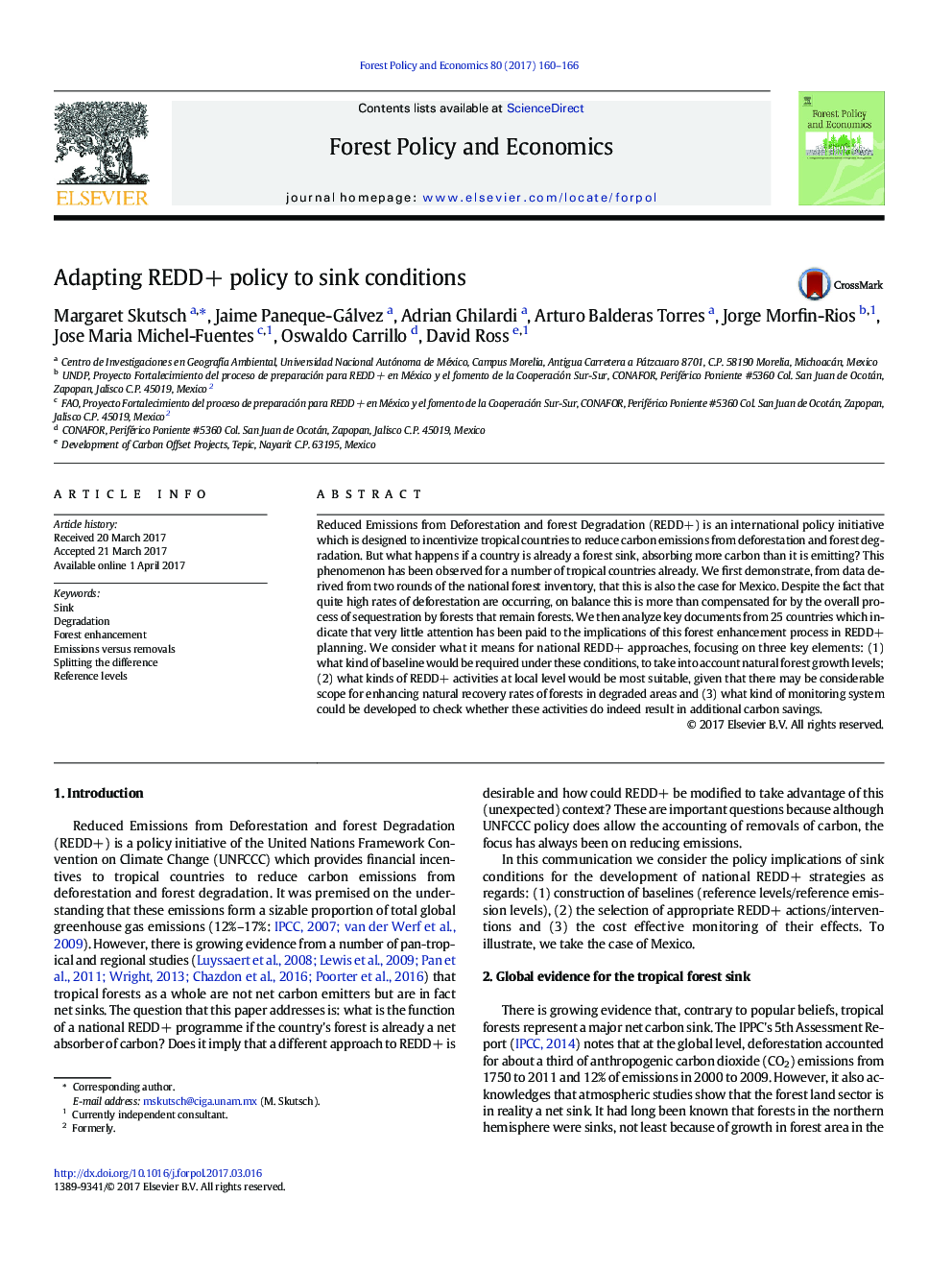| کد مقاله | کد نشریه | سال انتشار | مقاله انگلیسی | نسخه تمام متن |
|---|---|---|---|---|
| 6459754 | 1421659 | 2017 | 7 صفحه PDF | دانلود رایگان |

- Research indicates that the forests of many tropical countries may represent net sinks.
- New data from Mexico illustrates this phenomenon.
- There are major opportunities under REDD+ to reverse degradation by enhancing the natural sink effect.
- Attention is needed for baselines to capture underlying growth rates and to ensure additionality.
- Research is needed to better understand what programmes/policies will best promote natural enhancement.
Reduced Emissions from Deforestation and forest Degradation (REDD+) is an international policy initiative which is designed to incentivize tropical countries to reduce carbon emissions from deforestation and forest degradation. But what happens if a country is already a forest sink, absorbing more carbon than it is emitting? This phenomenon has been observed for a number of tropical countries already. We first demonstrate, from data derived from two rounds of the national forest inventory, that this is also the case for Mexico. Despite the fact that quite high rates of deforestation are occurring, on balance this is more than compensated for by the overall process of sequestration by forests that remain forests. We then analyze key documents from 25 countries which indicate that very little attention has been paid to the implications of this forest enhancement process in REDD+ planning. We consider what it means for national REDD+ approaches, focusing on three key elements: (1) what kind of baseline would be required under these conditions, to take into account natural forest growth levels; (2) what kinds of REDD+ activities at local level would be most suitable, given that there may be considerable scope for enhancing natural recovery rates of forests in degraded areas and (3) what kind of monitoring system could be developed to check whether these activities do indeed result in additional carbon savings.
Journal: Forest Policy and Economics - Volume 80, July 2017, Pages 160-166